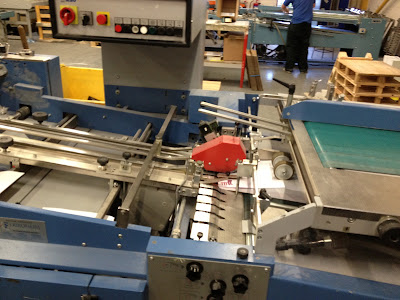Stephen Covey - 7 Habits of Highly Effective People
Laurence Kohlberg - Pyschologist - Ways in which people behave to become successful.
Carl Hopkins - Alumni of Leeds College of Art - Invests in young and creative businesses.
1) Proactivity
Stimulus -> Response
Stimulus -> Choice -> Response
We choose how we respond to a stimulus by developing strategies.
In our practice, we should expand our circle of influence in order to be more proactive by getting work placements and experience, meeting new people, gain contacts, network with likeminded students etc.
3 Environments
Internal environment - Skills, resources, lifestyle
Micro environment - Network of friends and associates, competitors, other practitioners
Macro environment - Economics, technology, social trends, politics. These cannot be affected as a whole.
**The micro environment is where we get our influence**
2) Project
- Develop a vision of our future
- Create a principle-centred personal mission statement
- Extend the mission into long term goals
Priority management
To build a vision for our future:
Business plan - Gain a degree in chosen subject and learn as much as you can
Life plan - Family, friends, economics, whereabouts
Business vision - Business plan and life plan combined
"Life is what happens while you are busy making other plans" - John Lennon
"Begin with the end in mind" - Carl Hopkins
3) Provide
- Clear explanations
- ...using their language
- Talk about benefits, not processes
Think - who you are talking to
Create - clear messages
Inspire - people with your creativity
Demonstrate how you can benefit a client and differentiate yourself from your competitors
4) Prioritise
- Put things first
- Keep a proper balance
- Stick to your personal mission
Time, study, social life, rest, money = Results (focus)
Prioritise your time accordingly in these areas
5) Presents
- Think - win/win
- Seek outcomes and relationships that are mutually beneficial
- Do a favour to gain a favour
Benefits them as much as it benefits yourself
Form relationships but make sure the benefits are clear
Getting together with others extends your capacity and opens your opportunities
Kohlberg's theory
1) Pre-conventional (Dependent) Ecocentric; only thinking of themselves; short term
- I want
- Why should I?
- Nobody listens
2) Conventional (Independent) Negotiate; listening to others
- I would be happy to
- Your needs
- I understand
3) Post-Conventional (Inter-dependent) Larger society - communities; working within a team/collective. Devise plans which will be sustainable long term; infrastructures that will last years
- We can
- Together
- Mutual benefit
Form relationships but make sure the benefits are clear
Getting together with others extends your capacity and opens your opportunities
Kohlberg's theory
1) Pre-conventional (Dependent) Ecocentric; only thinking of themselves; short term
- I want
- Why should I?
- Nobody listens
2) Conventional (Independent) Negotiate; listening to others
- I would be happy to
- Your needs
- I understand
3) Post-Conventional (Inter-dependent) Larger society - communities; working within a team/collective. Devise plans which will be sustainable long term; infrastructures that will last years
- We can
- Together
- Mutual benefit
6) Pause
- Give all your attention
- Empathise - walk in someone's shoes
- Don't re-iterate or interpret - just listen
- Do you really know how they feel?
- Seek first to understand, then be understood
Dont expect clients to understand what you are trying to say unless you have listened to what they need first - learn from your differences.
7) Proven
- Consistency
- Integrity
- Reliability
Brands need to deliver a certain quality/performance/experience which is expected by the consumers
Consumers trust these brands due to their consistency and reliability
In our practice, we must seek to achieve these traits
8) Partner
- Synergy multiplies your talents
- Work with other experts outside your field to achieve greatness
It is not possible to achieve such greatness and success without the help of others:
James Dyson - Could not have mastered the technology on his own
Anthony Gormley - Prolific sculptor who works with other parties
Michelangelo - Took several people to create his work
Everest expeditions - Cannot be achieved without help and support
Damien Hirst - Art director who finds others to help achieve his vision
The movie, Avatar, had 600-800 credits, all of which were freelance or small, independent business which all had creative input in order to achieve the director's vision.
The freelance creative has more opportunity for success than ever before.
9) Pit stop
- Sharpen up
- Rest - renew, revitalise
- Explore - challenge, excite
You need the time to acquire new skills, re-evaluate what you are doing and take time out.
Excite and stimulate your imagination.
10) Propel
10) Propel
- Extinguish your fears
- Exude confidence
- Instil faith





















































